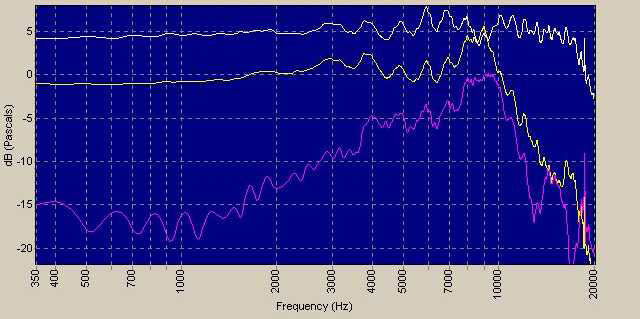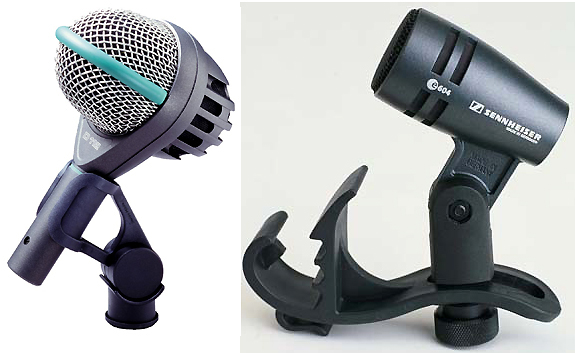
Moving Robustly
Conversely, moving coil mics are inherently robust. This design is an overwhelming success story for the working band or sound reinforcement crew. It is also inexpensive.
Most moving coil mics are unidirectional – they only pickup what is in front of them. This is useful because sound entering the mic from the monitor system can cause that squealing sound called feedback that is an unmistakable beacon of failure. Sound engineers work hard to avoid it, and everyone in the house knows when they don’t.
The strength of the magnets and the number of wraps around the coil matters, as does the size of the diaphragm. Large diaphragm moving coil mics are more sensitive than their smaller diaphragm counterparts. They’re generally good mics for drums with the exception of snares, which produce a high-end rattle (from their wire “snares”) that small diaphragms (found in mics like the Shure SM57) seem to do better on.

Snare drums also produce very high sound pressure levels and can distort large diaphragm moving coil mics.
Large diaphragm moving coil mics like the AKG D112, D550 or the Shure Beta 52 make very good kick drum mics. Sennheiser also makes some nice mics for drums, such as E602 for kick as well as E604 for toms. The latter also includes a mount that grips the top rim of the drum, eliminating bulky mic booms that clutter the stage and can be knocked over. (I’ve even used these in the studio.)
If you’re running sound using onstage wedges for monitors, dynamic moving coil mics are a good choice, providing a high amount of gain before feedback while also relatively easy on the pocket book. If you’re using in-ear monitoring systems, you may opt for condenser mics for vocals and some instruments. There is quite possibly some additional expense, but the rewards can be considerable.
Condensers For Stage
Condenser mics have found their way into more and more live sound applications. Condensers are very sensitive and have a flat frequency response over much of the 20 Hz to 20 kHz audio range, in part due to their design.
These mics work by the principle of variable capacitance, with a fixed plate and a moveable plate. These plates function as the polarized magnetic source. Sound pressure enters the mic and causes the moveable plate to vibrate in proximity to the fixed plate. This vibration is identical to the original frequency of the sound vibration.
As the plates move closer, then farther apart, they perform the function of an electronic component known as a capacitor. The capacitance varies and a small electronic circuit in the mic produces a current flow that mimics the sound signal. Dynamic mics’ magnets are charged at the manufacturer so that they retain up to 20 percent of the voltage applied to them permanently.
Unlike dynamics, condensers don’t have magnets that are charged permanently at the time of their manufacture. As a result, their diaphragms must be charged every time they’re used, accomplished with the use of phantom power. Supplied to the mic through the mic cable, phantom power is normally 48 volts DC for large diaphragm “air” condensers.
The variable capacitance design of condenser mics makes them more sensitive to incoming sound pressure. They’re very “hot” mics. Guitarists can relate this to active circuitry in guitar pickups, and for much the same reason.
Condenser mics also generally exhibit a very flat frequency response. One specific design of the genre is the electret condenser. This design can use a small DC battery or phantom power of considerably less voltage than the 48 volts required by air condensers. Don’t confuse this function with a battery-powered transmitter for wireless mic systems.
